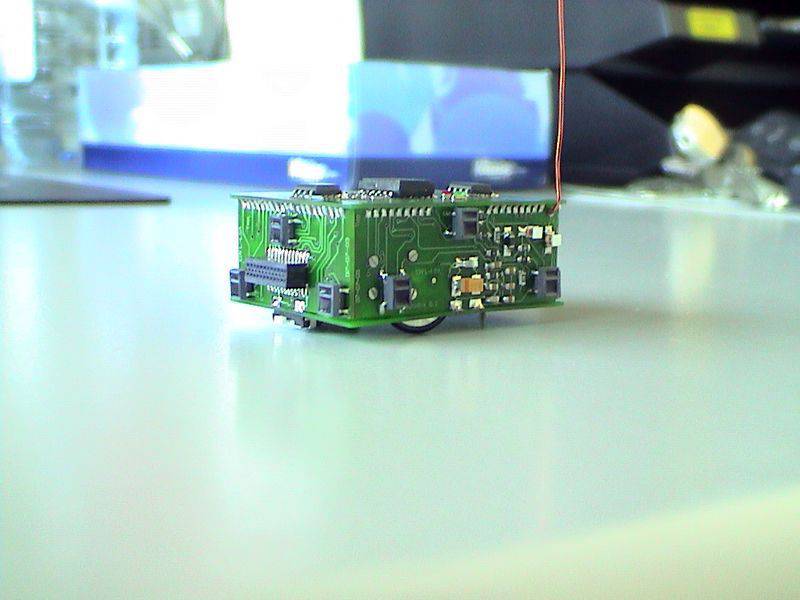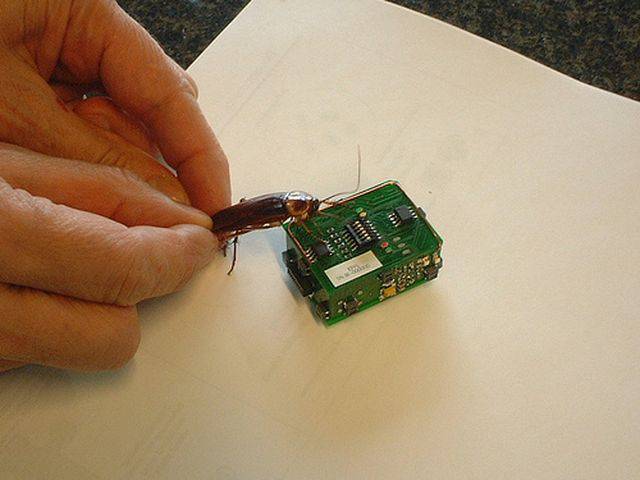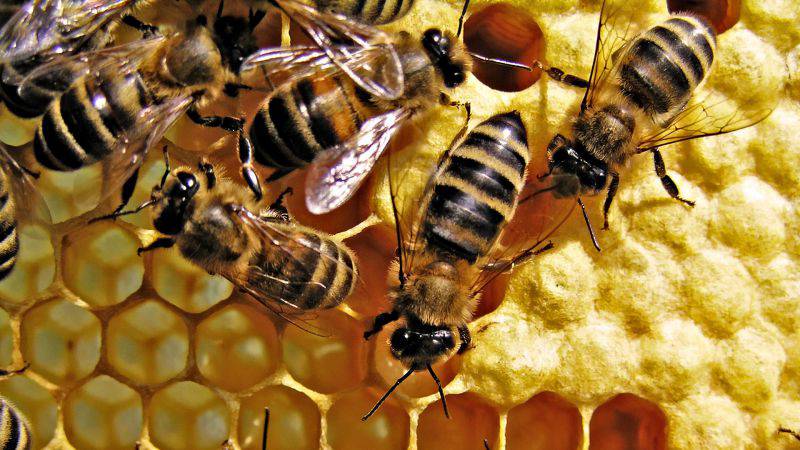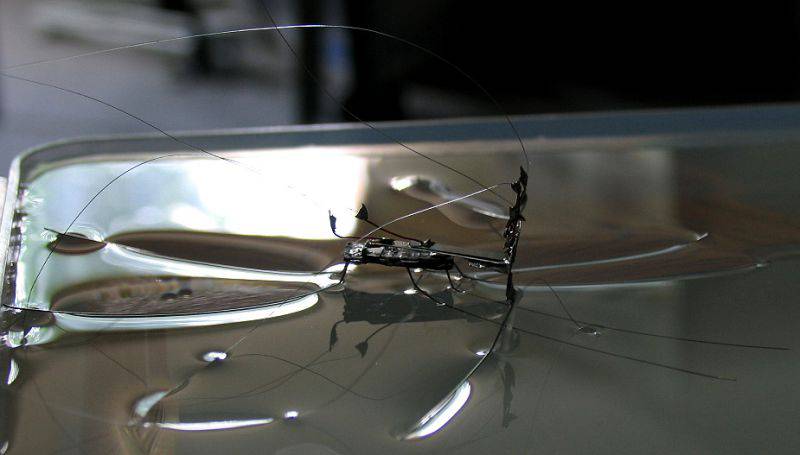Insect robots are ready to enter the service
The creation of robotic systems is one of the modern directions of development of military equipment. This is a rather expensive process, but it fully justifies itself. It is believed that once robots will be able to replace a person when solving many combat missions, saving human lives. There is such a direction and a special case - the development of miniature military robots, which are mainly created to solve various reconnaissance tasks. With intelligence, miniature robotic assistants can do much better than humans.
Each year, the Pentagon and other US security agencies send more than 10 billions of dollars to the Advanced Defense Research Agency (DARPA), which oversees engineering and military research. Most of this money goes to the creation of combat cybernetic devices that could be used independently on the battlefield. These developments include, for example, the design of a light armored vehicle Ground X-Vehicle Technology, which may be ready in 5-6 years. With weapons, such a machine will be able to independently act on the battlefield.
However, no less important are the work on the creation of autonomous miniature devices that are able to collect tactical intelligence information. For example, in Europe, they are seriously working to create an ISTAR intelligence, surveillance and targeting system. For example, DCS (Data Capture Systems), a German system integrator, announced that its new reconnaissance system Falcon ISTAR, which consists of a one-seater gyroplane and a ground information processing station, was interested in the elite division of the Bundeswehr KSK, as well as the Saudi Air Force and the Royal Guard Bahrain. All three of these potential customers are going to purchase more than one system, and the Saudi Air Force is thinking of acquiring 50-60 with such border control devices.
According to the manufacturer, the autogyro can also be used in an unmanned version. The hour of its operation costs 150 dollars, whereas the hour of operation of a helicopter with comparable capabilities in 500 dollars. The created Falcon ISTAR system can be used for patrolling certain areas, escorting columns, monitoring security at sea, target designation. This unit can be airborne for up to 6 hours, reach speeds in 190 km / h and take on a payload of up to 200 kg. The device is able to transmit the collected intelligence to 100 km.
In the US, they are also working on this program, actively developing an air component that would be crammed with various surveillance devices and sensors. The device is called "stupa." However, it would be difficult to confuse him with insects. The size of the "stupa" is comparable to the size of a goose. Such dimensions are quite appropriate in front-line operations, but for carrying out delicate spy missions, the device is too big, they require “stealth devices”.
For these purposes, the ideal robot that was developed in the laboratory of Lockheed Martin. It is a fully controlled aircraft, which is successfully disguised as a maple seed. It is difficult to say how this invention will be used in practice, but it is clear that such a miniature flying vehicle can become an excellent, indispensable spy robot. The device can not be visually distinguished from ordinary maple seeds, which is familiar to many. With a weight of just 10 grams and a centimeter 4 length, this unit is equipped with a miniature motor, battery, microchip and video camera. Such a “seed” can be started up to a distance of 1 kilometers using the existing engine. After that, the engine is turned off and the robot, rotating, silently falls to the ground, while transmitting the resulting image via radio. This unit can be effectively used in urban environments.
For the most part, developers of miniature robots borrow ideas and design solutions that have been proposed by nature itself. This is due not only to the desire to mask devices, but also to the optimal combinations of cross-country ability, energy consumption, and speed of movement of living “mechanisms”. It is worth noting that some university developments in the field of bionics cannot be directly connected with developments in the field of military espionage and intelligence. But as they get positive results, their creators begin to think about the additional possibilities of using their devices. For example, a professor from Essex University, Huosheng Hu, designed and assembled a robot fish that is outwardly very difficult to distinguish from the real one: the same structure of movement, same shape, same speed of movement. Huosheng Hu claims that his robot will be useful in finding leaks in pipelines. It is possible that once this smart fish will be of interest to representatives of the royal fleetwho could use it as a scout. Similar developments are also underway in the United States. An example is the Silent Nemo project, in which a robot resembling tuna and weighing 45 kg was created.
If we talk about flies and mosquitoes created by human genius, the information about such robots is greatly exaggerated. At the moment, the smallest insect-like robot that can perform a waving flight is the mechanism developed at the University of Toronto, which received the designation "Mentor". But its size is far from the size of the insect. The device reaches a length of 30 cm and weighs 0,5 kg. In size, it looks more like a chicken. In this respect, such a device is much inferior to ordinary, but miniature aircraft. For example, at the exhibition of robots in Japan 5 was shown a few years ago by a helicopter with an electric motor weighing only 9 grams, the height of the device was only 7 cm.
True, overseas in DARPA seriously hope for a miracle. Periodically, the agency spends money on projects that are aimed at the creation of cybernasekoms, and not mechanical ones, but quite lively ones. With an interval of almost 3, two different companies were engaged in embedding microchips into bee pupae. When they were finally formed in adult bees, the chips had to provide control over their actions. It was planned to use such “cyberpacs” to search for explosives. In part, insects did execute operator commands. But, above all, it was guided by its own main instincts - the search for food and reproduction.
But the development of jumping and running insect-like robots is developing much more successfully. So, engineer Sarah Bergbraeter from the University of California at Berkeley was able to design a prototype flea robot that can jump in height, up to 30 times the height of his body. Created in California, the flea weighs only 10 mg, and its length is 7 mm. Currently, work on this project is only in the initial stage, so it’s too early to talk about installing some equipment or sensors on a flea robot.
The robot was equipped with control electronics, as well as a number of microelectromechanical systems (MEMS), which actuate the moving parts of the robot and the mechanism for performing jumps with a single retractable foot. In order that this leg could sharply “shoot”, pushing the robot forward, the creator provided it with the world's smallest rubber band, which has a thickness of 9 micrometers and a length of 2 mm. This rubber was cut with a laser from a thin sheet of silicone. Since the power of the created prototype of the robot is very small, the following tactics were used for its effective movement: miniature electrostatic motors tightened the gum and abruptly released it. The current for the operation of the engine should give a tiny solar panels that are installed on the back of the robot.
The idea of a similar mechanics of motion was borrowed from a flea, which inspired Sarah Bergbreiter to create her miniature robot. The difference is that the insect accumulates energy for jumping in a special rubber-like protein, which initially is slowly compressed, and then abruptly released, shooting a flea into the air. Having performed a series of experiments with her robot, Sarah established that her 10 milligram robot flea was able to make a jump on 400 mm horizontally and 200 mm up.
And scientists from Carnegie-Milon University were able to achieve quite convincing successes in creating water-boom robots. Their product Water Strider Robot with 12 dimensions on 12 mm and 1 grams in weight is able to navigate on its 6 legs, made of steel wires, covered with a special water-repellent plastic. At the same time, the robot can carry a weight of 10 grams on its back. Ordinary water striders avoid their immersion in water by distributing a fairly small mass of their own body on the elongated legs, which are covered with miniature hairs, which significantly increases the buoyancy due to the presence of air around them.
However, a microrobot created by scientists with a weight already weighs 11 grams, which is approximately 1100 times more than the weight of an ordinary water strider. For this reason, the robot has to make much more effort to push itself away from the water surface, and this carries a great risk of breaking the existing surface tension and immersing the entire device in water. To solve this problem, scientists have applied the method of computer modeling to study all the forces that act on the waterman’s supporting legs. After that, they came to the conclusion that to support the legs of the robot-water strider while still being able to move around the water and even make jumps on the water surface, it is necessary to apply superhydrophobics. In other words, waterproof materials.

If we talk about the control system of this miniature robot, it includes a gear unit and miniature DC motors, which allow the robot to jump on the water surface on 35 cm in length and on 14 cm in height. In addition, the created miniature robot boasts the ease of evading various obstacles and high mobility, which provides it with high potential for monitoring water quality or conducting observation and reconnaissance missions.
In parallel with the work on improving the supporting structure of miniature robots, work is underway in the field of equipping all this fraternity of insect-like robotized systems with a variety of sensors, microphones and surveillance cameras. Research is also carried out in the field of their equipping with collective intelligence. And such a move was also overseen by scientists from nature, since insects have always been strong in their coordinated actions and innumerable numbers.
The greatest success in this area was achieved by a group of scientists from France, Belgium and Switzerland, which created several prototypes of InsBot robots. Now experts are working on software development, with the help of which several dozen of similar cockroaches, obeying the “swarm family” algorithm that is unique for them, will assist in the study of hard-to-reach places — emergency buildings and structures, man-made disaster zones, and caves. They will be able to draw up detailed plans for the premises and take measurements of radiation, temperature, and take soil and air analyzes.

The green robot looks the least like a cockroach, and its dimensions look more like a box of matches: length - 30 mm, width - 41 mm, height - 25 mm. The robot received two 16 MHz processors, 10 infrared sensors and a camera. In addition, it is equipped with two electric motors that set in motion a pair of its wheels. It is worth noting that the external differences of the real cockroaches "on the drum." The main thing is that InsBot moves like a cockroach and smells like a cockroach. Real cockroaches can take it to their company. According to scientists, such a miniature robot is a major achievement in the field of human control over the animal world. Already, InsBot is able to penetrate into groups of real cockroaches and change the pattern of their behavior.
According to scientists, after a while such a cockroach can even “feed” itself independently. Researchers working at Case Western Reserve University, located in Cleveland, have found a way to convert organics into electrical energy. That is, in the long run, the InsBot robot-cockroach will be able to work without recharging for an arbitrarily long time, simply devouring the organic matter it encounters on its way. In its current state, InsBot already has some of the advantages mentioned above. He is able to accurately copy the behavior of cockroaches, assuming the role of leader. Normal cockroaches take the robot for their own and follow its "orders" or copy behavior. For example, this could be one of the ways to clean your home of uninvited red guests, who would simply be entrapped by a robot cockroach. But this use of a unique design would look, at least, strange. However, it vividly shows us how much success mankind has already achieved in the field of microcybernetics.
Information sources:
http://svpressa.ru/post/article/115001/?rintr=1
http://www.1024.by/archives/661
http://www.membrana.ru/particle/11318
http://www.membrana.ru/particle/2858
http://www.oborona.ru/includes/periodics/armstrade/2014/0731/183913721/print.shtml



Information